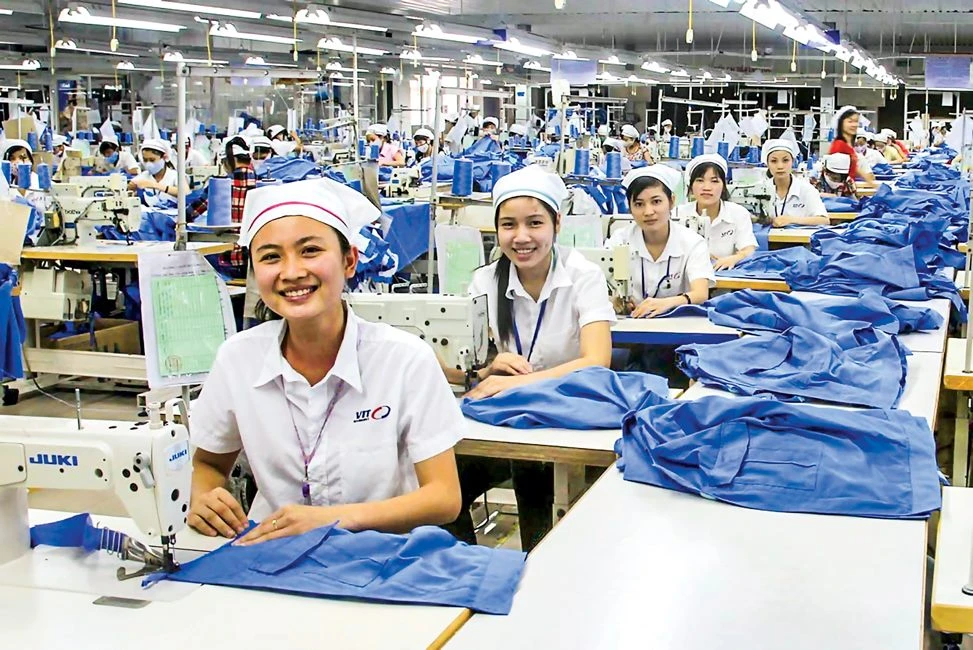
What happened in the past with our 10 Free Trade Agreements (FTAs) continues to worry us about the effectiveness of joining CPTPP. We expected a lot from FTAs, but so far, the results have been limited.
CPTPP is just a new version of FTAs with only higher standards and the most extensive level of free trade. Hence, besides opportunities, we also face challenges.
Opportunities for Vietnamese enterprises
CPTPP is opening many wide opportunities for Vietnam, in terms of increasing international trade and attracting investment from several potential countries like Canada and Mexico. CPTPP also will help in improving trade relations between Vietnam and some other countries, such as Japan, Australia and New Zealand.
To summarize, Vietnamese enterprises have many opportunities to increase revenue and profits. These opportunities are very meaningful for Vietnam amidst the escalation and complexity of the ongoing trade war which is currently impacting global trade and investment flow significantly.
Six attractive markets have removed 78-95% tax for Vietnamese products. About 8,000 to 9,000 product types are enjoying 0% tax rate, creating advantages for Vietnamese enterprises in competing with countries which have not joined FTAs.
Besides the economic impact, CPTPP is considered a way for Vietnam to achieve long term sustainable growth. The CPTPP requirements on social issues, such as environment and corruption, will help Vietnamese enterprises improve their image and build trust with international clients, though compulsory cost is expected to increase.
Challenges and barriers
Only 39% of our total exports went to FTAs countries in 2018. Although this ratio is higher than previous years, it is still lower than 50%. It means that the other half of exports have not utilized the advantages of FTAs.
Currently there are two barriers that constrain Vietnamese enterprises to extract the benefits of FTAs.
Firstly, the ability to meet the requirement of origin to get tariff advantage. Many key industries are dependent on imported materials from non-CPTPP countries. This is the core weakness of Vietnamese enterprises to utilize the opportunities from FTAs.
The shortage of domestic materials, which was considered a headache for textile, garment and shoe making enterprises, now is also barrier for other sectors such as aquaculture and cashew processing. These sectors used to be very strong in material resources.
We have been creating many solutions for these problems. For textile, garment and shoe making industries we focus on developing the dyeing and tanning sectors, expand the material area, and create more value added products like design and distribution divisions. However, we lack the method and determination to apply these solutions. The application is also not consistent.
For example, on one hand we encourage development of dyeing industry, but on the other hand we apply very strict regulations on wastewater treatment and administration process.
Secondly, the ability to overcome quality and technical barriers of international markets, which are known as TBT-SPS (Technical Barriers to Trade-TBT and Sanitary and Phytosanitary Measures-SPS). We know that, tariff is only one of many trade barriers. TBT-SPS and other issues are sometimes even more challenging.
For criteria on chemicals, origin, antibiotic residues, food safety indicator and other requirements on labelling and packaging, Vietnamese enterprises have no choice, as they either have to qualify all of these criteria, or get out with no negotiation.
Radical change required
Overcoming the above barriers is key issue for Vietnamese enterprises. They should seriously learn the rules of TBT-SPS of targeted markets. They should adjust their manufacturing process to meet the requirements. They should maintain an internal control system to manage product quality.
However, there are also some constraints that are out of enterprises’ ability and need much support from the government.
For example, negotiation to get visa for Vietnamese fruits to enter some international markets, or the process to check and test quality of agricultural and aquaculture products, or the updates on TBT-SPS requirements which should be done by government offices.
Regulation on origin or barriers from TBT-SPS are only two out of many challenges facing Vietnamese enterprises to utilize advantages of FTAs and CPTPP. The other barriers include high logistic costs (constituting 20% GDP), degraded infrastructure, low quality labor resources, low productivity (only equals 7% of Singapore, lower than Laos); and complex administrative processes.
These barriers impact directly and significantly the competitive ability of enterprises in utilizing opportunities from CPTPP and other Free Trade Agreements.
We acknowledged the reality, we found the obstacles, we applied solutions. We have all done everything but the results are still limited. Hence, we have to change, completely change.
Accordingly, we have to reform totally the market mechanism, improve significantly the business climate, strongly encourage competition, create and innovate more opportunities for 500,000 companies and millions of household businesses, bring more jobs and income to workers and build a more vibrant economy.




















